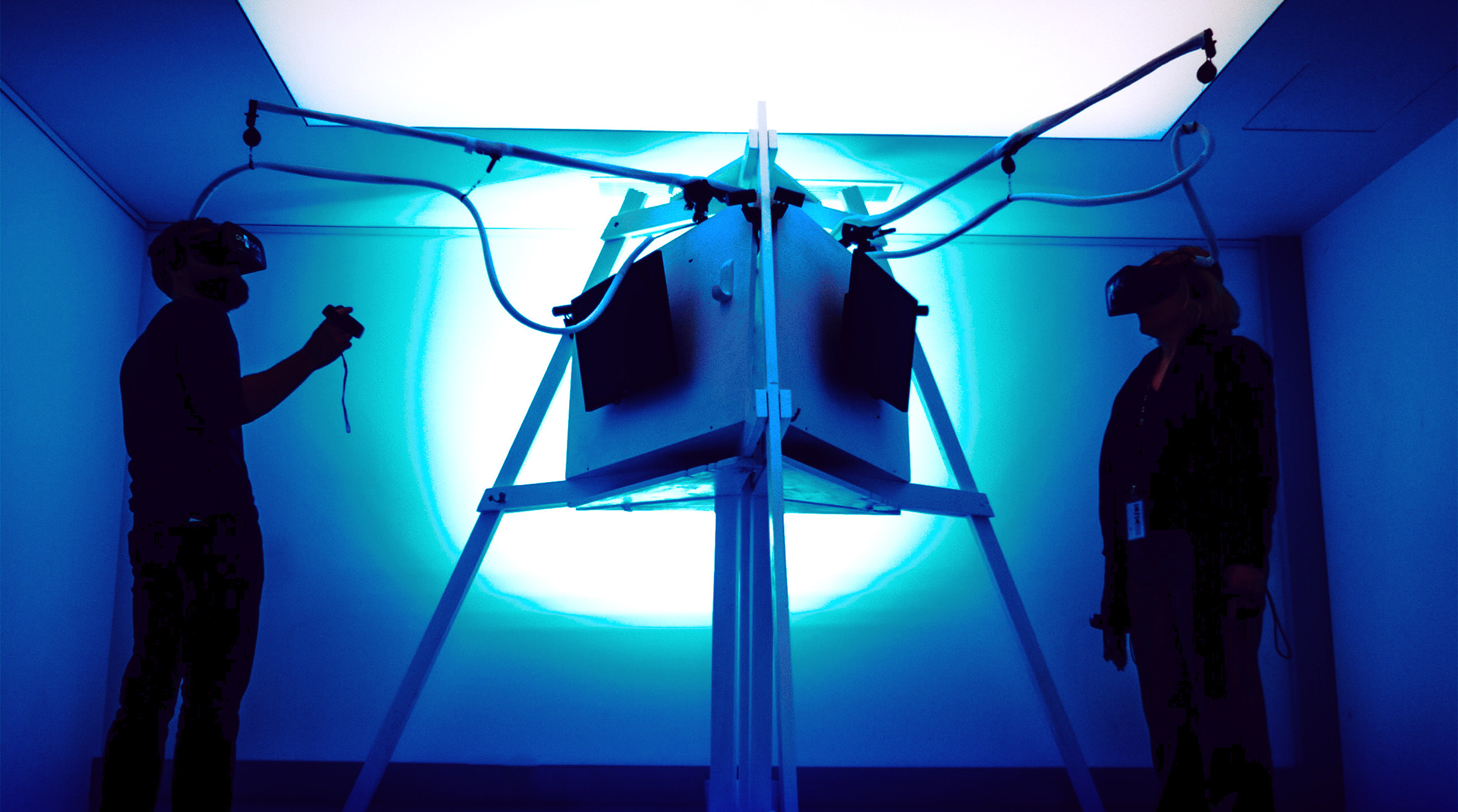What do people most likely feel after being in virtual reality? Isolated. You can’t interact with the person sitting next to you. Good luck taking a phone call or responding to text messages. You’re completely cut off from the world. Yet, Facebook has made a baby step in lessening this VR isolation through hand-tracking.
Controllers are normally the interface used to interact in virtual reality. However, Facebook’s Oculus Quest is making the first move toward eliminating the VR controller and replacing it with just your hands. With new machine learning techniques, the Oculus team is incorporating standalone hand-tracking. This means your physical hand gestures can translate into virtual reality.
Creating a cordless VR headset was already a big breakthrough for Oculus. A controllerless VR headset would be monumental.
VR’s Watershed Moment?
Hand-tracking makes virtual reality more intuitive and approachable for all types of users. It greatly expands the number and type of gestures you can do in VR. Hand-tracking makes VR even more portable. And lastly, it makes VR feel more natural.
But there are limitations.
In an ideal world, VR will be responsive to all of our natural gestures. However, you’ll likely still need to learn a set of predefined gestures. Additionally, moving your hands too fast will cause the hand-tracking to lag. And your hands need to stay in the frame of the headset cameras in order to register.
Then there’s the haptic barrier. It’s difficult for your mind to comprehend that you’re touching something in VR, when you’re not physically touching anything. It can be quite confusing. Haptic gloves are the obvious solution. However, I’m really drawn to the work of Ultrahaptics – who’s creating the sensation of touch in mid-air. Thus, there wouldn’t be a need for haptic gloves.
Overall, hand-tracking isn’t going to entirely replace your controller for some years. But it does give developers a new vertical to take into account.
Hand-tracking makes people more expressive in social environments.
To some degree, we all talk with our hands. But in VR, those hand gestures are lost. This was the major selling point that Facebook was announcing. In communities like VRchat, hand-tracking will make conversation more natural and expressive. Now you can finally do that Italian “mama mia” hand gesture or express your anger by flipping someone the bird.
Hand-tracking will immerse people further into the story.
Your hands can transform into octopus-like tentacles and Wolverine-like claws, so different overlays other than human hands are possible, adding even more layers of possibilities.
Chuong Nguyen, Digital Trends
There are a few immediate VR opportunities I see greatly benefiting from hand-tracking.
Virtual Pets and Therapy Dogs
Tamagotchis and Nintendogs both proved virtual pets are a sensational idea that millions of people desire. In the VR console, games like Beast Pets or Konrad’s Kittens put you directly in a room with your virtual pet.
Hand-tracking will elevate virtual pet ownership because you can use normal hand gestures to hold and toss a treat, scratch behind their ears, and rub their belly.
Aside from the consumer opportunity, virtual therapy dogs could really take off. VR therapy is already a fruitful field of research. Giving hospital patients a virtual therapy dog to look after might be an effective way of boosting their emotional state.
Athletics
With hand tracking, athletics begin to make a bit more sense. Traditionally, shooting a basketball in virtual reality is an awkward experience that in no way reflects actual shooting.
However, hand-tracking would bring us that much closer to actually holding a golf club or a basketball – incorporating more natural movements. Hand-tracking is still limited by the four cameras on the front of the Oculus Quest. So, you’d have to be careful to keep your hands in frame. In other words, the ol’ Larry Bird behind the head shooting form would be no good.
Nonetheless, I see hand-tracking as a keystone in bringing athletics into VR.
VR Training
Everyone from Walmart to the next class of neurosurgeons is using virtual reality environments to train new people. Hand-tracking will allow trainees to practice the actual hand movements that will be used on the job, instead of holding a controller in their hand. Leaders in this field of AI training – STRIVR, Knowledge Anywhere, and NeuroVR – are all likely to hop on this opportunity to develop their VR apps with hand tracking.
VR Training isn’t just a gimmick either. It’s an interest years in the making:
VR Classrooms & Meetings
As I mentioned before, Oculus was very keen on how hand-tracking will make communication in VR much more expressive. In the education market, this will be a huge selling point for lecturers, professors, and teachers that want to captivate their classrooms / auditoriums in VR.
Likewise, this will make VR meetings much more civil and likelike. Facebook recently announced Oculus for Business which was them letting companies know they’re serious about bringing VR into the workspace. Additionally, a company like 3Data – which allows people to develop data reports for viewing in VR – will benefit from hand-tracking because teams will be able to more readily interact, manipulate, and understand the data they’re sharing with the team.
Despite VR’s rocky history, I’m still very bullish on the technology. It’s the technology that I believe will create the most opportunities in the next decade. And I see hand-tracking as just another step toward creating a Metaverse we can all enjoy.

1 comment
Comments are closed.